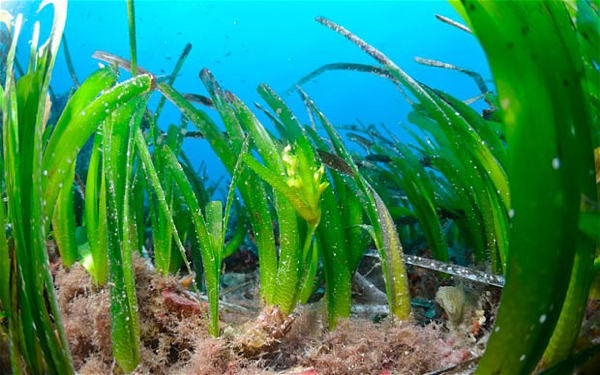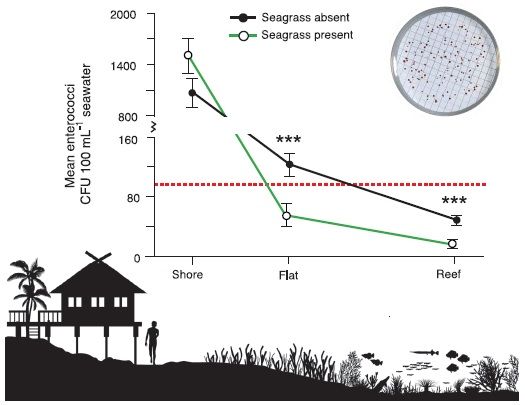Underwater Seagrass Fights Ocean Germs
Published on by Marina A, Previously Key Account and Content Manager at AquaSPE AG in Academic
Underwater seagrass meadows benefit the environment by reducing ocean bacteria, therefore having positive impact on fish, corals and human health.
 Seagrass are floating plants with long narrow leaves, which grow in shallow coastal waters and can spread to form big underwater lawns.
Seagrass are floating plants with long narrow leaves, which grow in shallow coastal waters and can spread to form big underwater lawns.
They can be compared to rainforests since they store the carbon in the ocean. Not only do they remove nitrogen and phosphorous from water, but also harmful germs, working as natural filtration systems.
Cornell University scientists conducted a study of the influence of seagrass on bacteria. They tested the waters at Spermonde Archipelago, Indonesia.
The whole team had gotten sick with dysentery and found the link to human and coral health.
They established that seagrass has impact on lowering bacteria levels by comparing the water quality at two different place with one difference – the presence of seagrass. The sampled water without a healthy seagrass bed had 10 times as many Enterococcus bacteria as the U.S. Environmental Protection Agency limit. Additionally, other bacterial species levels were noticeably lower and marine invertebrates were healthier if seagrass was present.

"The genetic sequencing work pinpointed the kinds of bacteria -- all in difficult, arduous conditions," said Drew Harvell, professor of ecology and evolutionary biology. "It showed exactly what was in the water. The beautiful oceanside water looked blue-green, but truly it was filled with dangerous pollution -- some really bad stuff in the water close to shore."
Seagrass meadows indirectly affect human health by keeping the marine ecosystems healthier – miking the fish people eat healthier.
It is not yet established how far away from the seagrass beds do their effects apply.
Seagrass beds are declining worldwide by 7% each year since 1990. With these new findings it is extremely important to preserve them.
Full research: Seagrass ecosystems reduce exposure to bacterial pathogens of humans, fishes, and invertebrates
Media
Taxonomy
- Water
- Aquatic Ecology
- Bacteria
- Research
- Water Quality
- Ecosystem Management
- Ecology
- Hydrodynamics & Water Quality
- Environment
- Ecosystem Management
- Marine
- Climate Change
- Oceanographic Survey